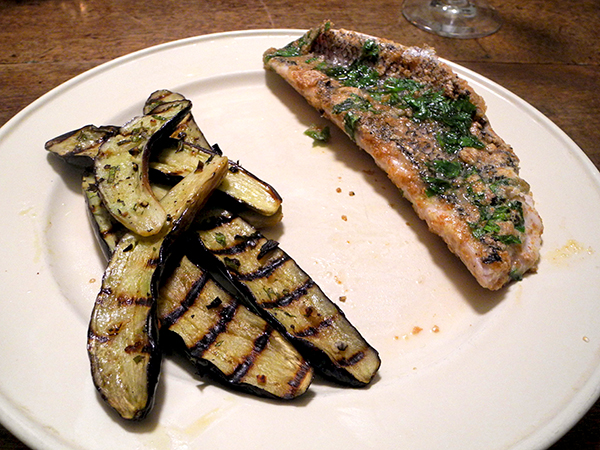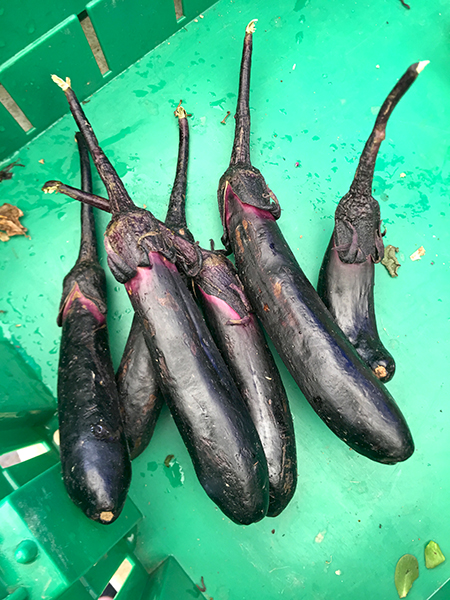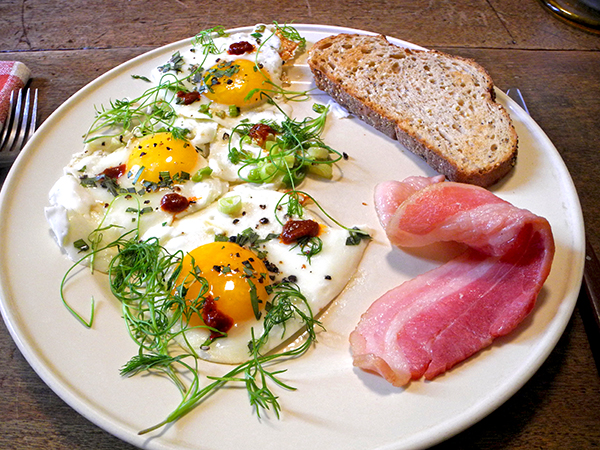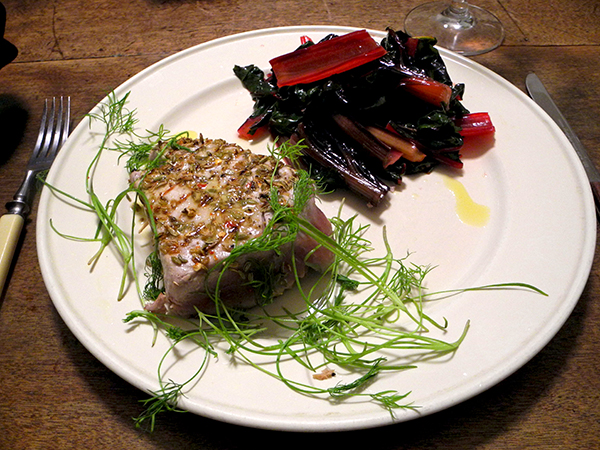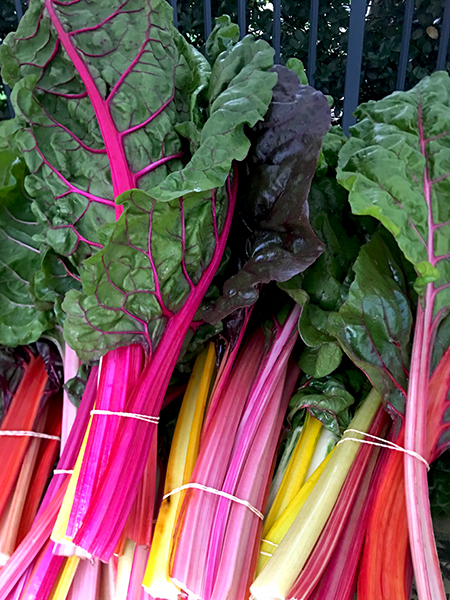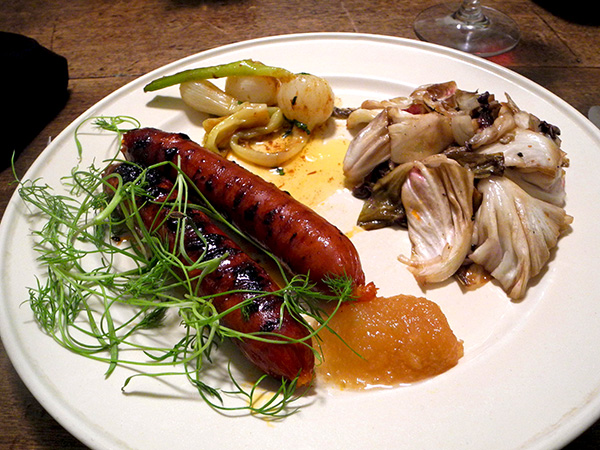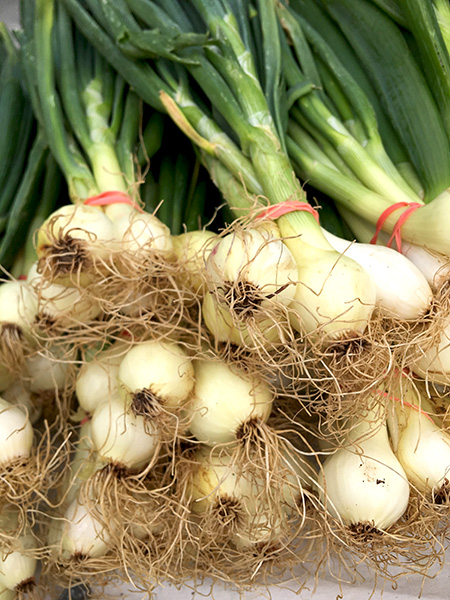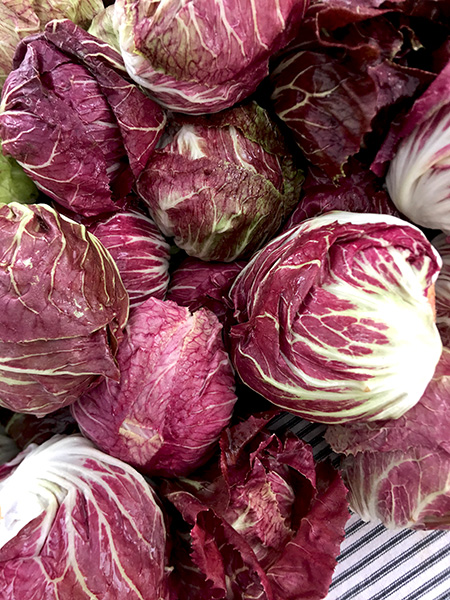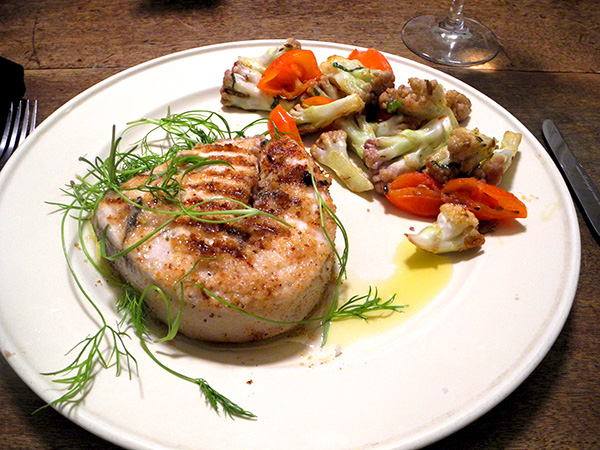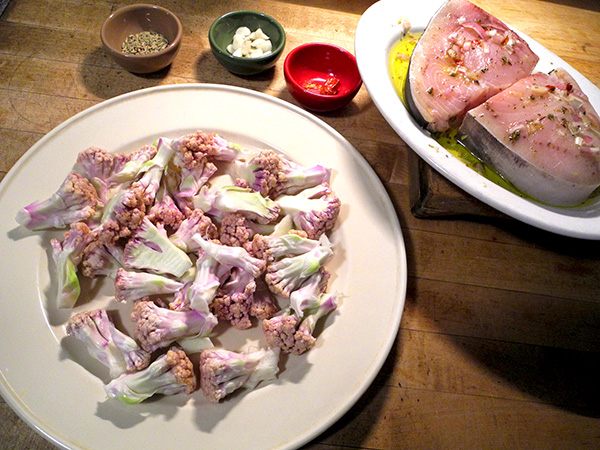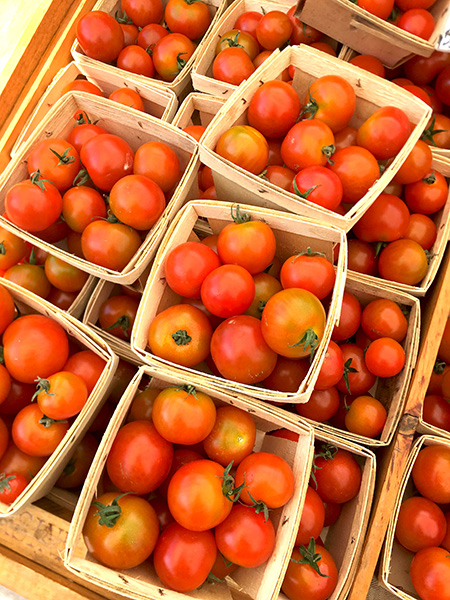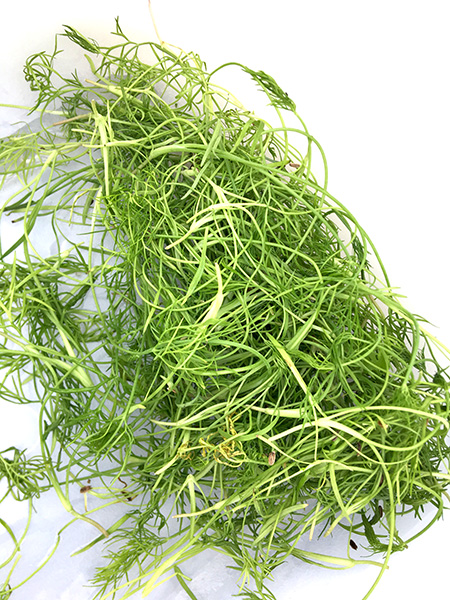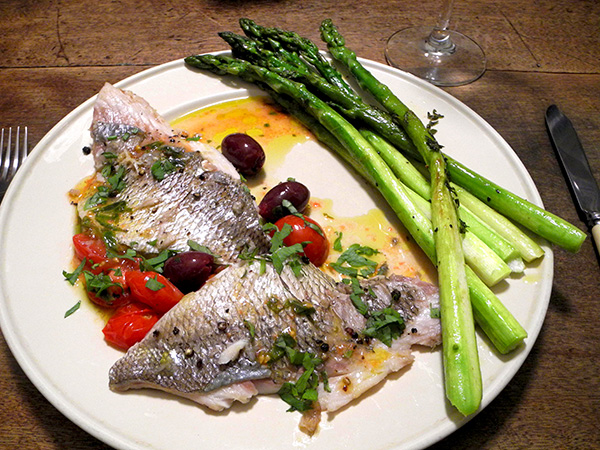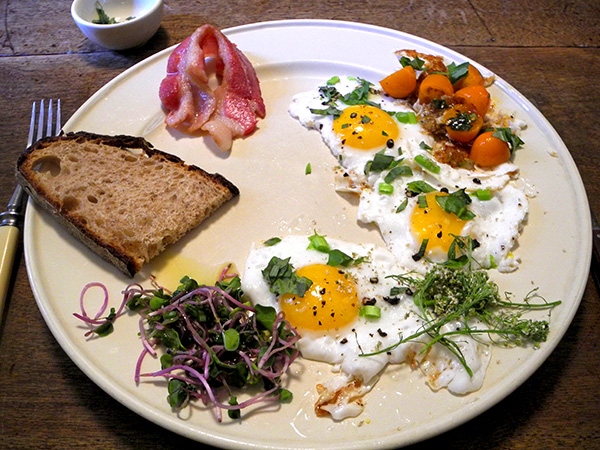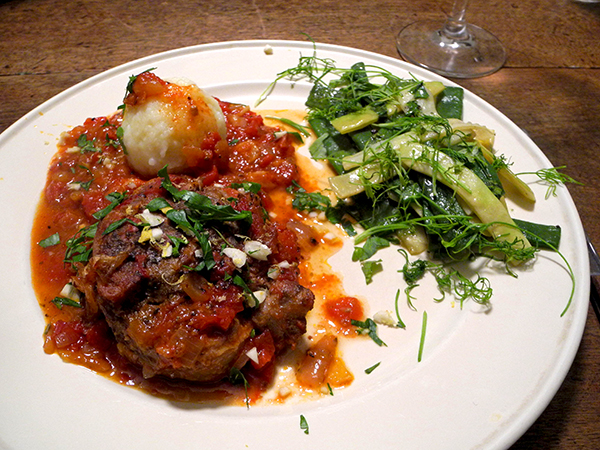
I can’t explain how I ended up preparing this very untraditional dish on the American Fourth of July, but it was probably just because I ran out of time the day before and was unable to pick up a steak.
I think it was mostly an Italian meal, with a touch of Austria.
Its pleasures however were beyond nationality or occasion, and huge.
I had never cooked sliced cross-cut veal shanks before, but after being shown a small package of 2 pieces by Alex of Consider Bardwell Farm, one of my favorite meat purveyors (although primarily a producer of cow and goat cheese), I decided I wanted to give it a try.
I mostly used this very simple recipe, which was delicious. I was surprised and very pleased with how little it heated up the kitchen, and how the cook wasn’t needed at all for the last full 2 hours of the process.
The vegetable was a mix of green and yellow Romano beans (flat pole beans), and they were very sweet and extraordinarily fresh.
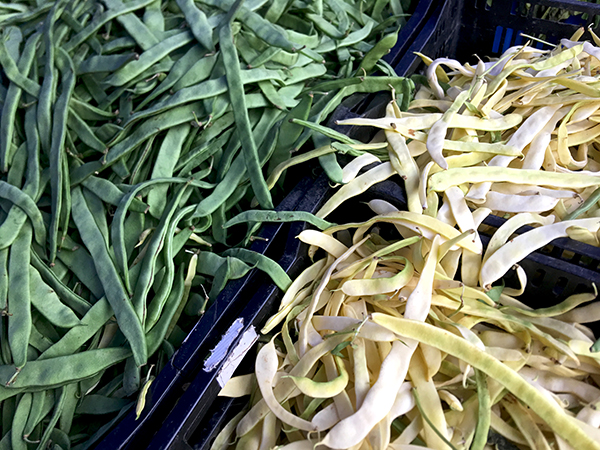
- two thick cross-cut sections of veal shank from Consider Bardwell Farm, dredged in seasoned local North Country Farms Stone Ground Whole Wheat Flour, seared and browned on all sides in a tablespoon or more of olive oil inside a heavy medium tin-lined copper sauce pan over medium-high heat (allow 10 or 12 minutes), removed and placed on a plate, the heat reduced to medium-low, one small red onion and one small yellow onion, chopped, both from Norwich Meadows Farm, plus 2 large chopped cloves of Christopher Garlic Ranch garlic from Eataly added to the pan and sautéed until tender (about 3 or 4 minutes), the shanks returned to the pan along with any liquid which had accumulated, seasoned with sea salt and freshly-chopped Tellicherry pepper, followed by one 14-ounce can of crushed San Marzano tomatoes, 7 ounces of a good low-sodium chicken broth, and an equal amount of white wine, 1/2 teaspoon of some very pungent dried Sicilian oregano from Buon Italia, and 1/4 teaspoon, or a little more, of zest from an organic lemon from Whole Food Market, brought to a simmer, then covered most of the way with a flat tin-lined copper lid, and simmered on the lowest possible flame, cooking for 2 hours, no attention needed, or until the meat was very tender and beginning to fall off of the bones, arranged on 2 plates and served topped with a gremolata consisting of one tablespoon or a little more of chopped parsley from Norwich Meadows Farm, one minced garlic clove, and another 1/4 teaspoon or more of lemon zest [the dish can be prepared 3 days ahead, covered, and refrigerated, and it’s likely to taste even better than if eaten the first day; also, should there be any leftover sauce, there are many ways it could be the highlight of another meal]
- two potato dumplings [Kartoffelklöße], ‘Melle’s Best Kartoffel Knödel’, purchased frozen from Schaller & Weber, defrosted the day before, boiled for about 12 minutes in salted water, drained and arranged on the plates on top of the osso buco sauce and drizzled with some more
- a combination of green and yellow Romano beans from Norwich Meadows Farm, parboiled for a few minutes, drained, dried, reheated in butter inside a heavy tin-lined copper pan, tossed with chopped lovage from Keith’s Farm, seasoned with sea salt and freshly-chopped Tellicherry pepper, arranged on the plates and sprinkled with chopped micro fennel from Windfall Farms
There was a small cheese course.
- a bit each of ‘Danby” goat cheese and ‘Rupert’ cow cheese, both from Consider Bardwell Farm, served with a few dried cherries from Whole Foods Market
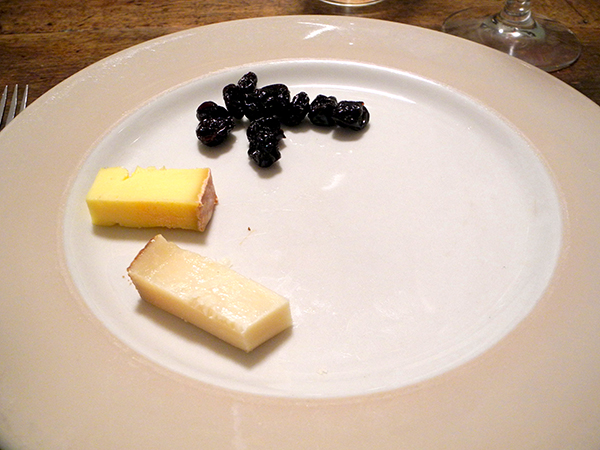
And there was the rare appearance of a proper dessert (after all, it was the Fourth, and they made a decent red/white/blue image).
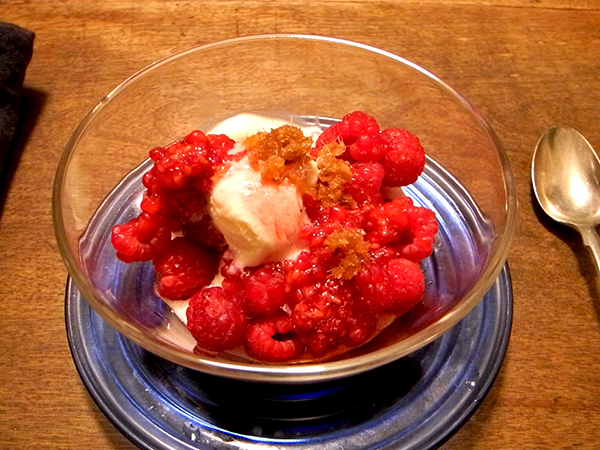
- raspberries from Wicklow Orchards, some of them mashed with a little orzata, to make a self-sauce, scattered on top of a medium scoop of Lā Loos ‘Vanilla Snowflake’ goat milk ice cream from Whole Foods Market, and topped with a bit of maple candy ginger that I had purchased in the Union Square Greenmarket and keep in the freezer compartment, but I no longer know the identity of the makers
- the wine through the first 2 courses was an Austrian (Carnuntum) red, Blaufränkisch, Markowitsch 2015, from Astor Wine & Spirits
- the music throughout the meal (as we were thinking of America, and Americans), was Leonard Bernstein’s 1956[+] opera, ‘Candide’, a 1989 recording with the composer conducting the London Symphony Orchestra, the London Symphony Chorus, with soloists including Adolph Green, Christa Ludwig, Nicolai Gedda, Jerry Hadley, and others
